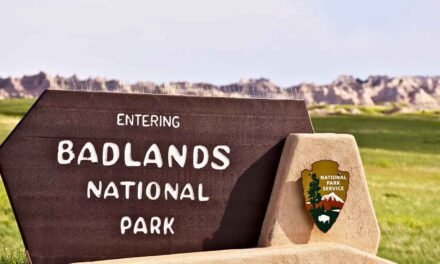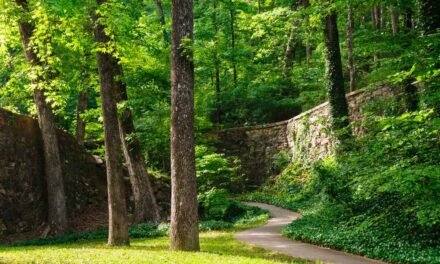Overview
Crater Lake National Park, situated in the Cascade Range of southern Oregon, is renowned for its extraordinary natural beauty, unique geological features, and pristine, deep-blue waters. The park’s centerpiece, Crater Lake, is the deepest lake in the United States and the ninth deepest in the world, formed over 7,700 years ago when a volcanic eruption caused the collapse of Mount Mazama. Today, Crater Lake National Park offers visitors a wide array of outdoor activities, including hiking, wildlife viewing, and scenic drives, as well as a chance to learn about the area’s rich history and geology.
Crater Lake National Park Location
Crater Lake National Park is located in southern Oregon, approximately 80 miles northeast of Medford and 60 miles northwest of Klamath Falls. The park is easily accessible via Highway 62 and Highway 138, with the main entrance situated on the southern side of the park.
Crater Lake National Park Things to Do
Scenic Drives
One of the best ways to experience the park’s stunning beauty is by embarking on a scenic drive. The 33-mile Rim Drive encircles Crater Lake, offering numerous viewpoints and overlooks that provide breathtaking vistas of the lake, surrounding forests, and volcanic features. Along the route, you can stop at various points of interest, such as Phantom Ship Overlook, Pumice Castle Overlook, and the Watchman Overlook.
Hiking
Crater Lake National Park boasts over 90 miles of hiking trails, ranging from short, easy walks to more challenging backcountry routes. Some popular trails include:
- Garfield Peak Trail: A moderate, 3.6-mile round-trip hike that offers panoramic views of Crater Lake and the surrounding area.
- Cleetwood Cove Trail: The only trail that provides access to the lake’s shoreline, this 2.2-mile round-trip hike is steep but rewarding.
- Plaikni Falls Trail: An easy, 2-mile round-trip hike leading to a beautiful waterfall surrounded by lush vegetation.
Boat Tours
During the summer months, ranger-led boat tours offer a unique perspective of Crater Lake and its fascinating geological features. These tours take visitors around the lake, stopping at Wizard Island and Phantom Ship, two of the park’s most iconic landmarks.
Stargazing
With minimal light pollution and clear skies, Crater Lake National Park is an ideal location for stargazing. The park frequently hosts ranger-led astronomy programs during the summer months, allowing visitors to learn about the night sky and observe celestial objects through telescopes.
Crater Lake National Park Itineraries
One-Day Itinerary
If you have just one day to explore Crater Lake National Park, consider the following itinerary:
- Start your day at the Steel Visitor Center to learn about the park’s history, geology, and recreational opportunities.
- Drive the Rim Drive, stopping at various overlooks and points of interest.
- Hike the Garfield Peak Trail for panoramic views of the lake and surrounding landscape.
- Finish your day with a leisurely walk along the Sun Notch Trail, which offers views of Crater Lake and the Phantom Ship formation.
Two-Day Itinerary
If you have two days to explore Crater Lake National Park, consider adding the following activities to your itinerary:
- On the second day, hike the Cleetwood Cove Trail and take a refreshing dip in the lake’s pristine waters.
- Join a ranger-led boat tour to explore the lake’s unique features, including Wizard Island and Phantom Ship.
- Visit the Pinnacles Overlook to see the park’s fascinating volcanic formations.
- Cap off your visit with an evening of stargazing, either on your own or by attending a ranger-led astronomy program.
Best Season to Visit Crater Lake National Park
Summer (June to September) is the most popular time to visit Crater Lake National Park, as the weather is generally warm and dry, with average daytime temperatures ranging from 60°F to 80°F. During this season, most park facilities and trails are open, and ranger-led programs and boat tours are available. However, keep in mind that the park can be crowded during peak summer months.
Winter visits (December to March) offer a completely different experience, with snow-covered landscapes and opportunities for snowshoeing and cross-country skiing. However, access to some park areas may be limited due to snowfall, and some facilities may be closed.
Crater Lake National Park Weather
Crater Lake National Park experiences a wide range of weather conditions throughout the year. Summers are typically warm and dry, while winters are cold and snowy, with average snowfall exceeding 500 inches per year. Spring and fall can be unpredictable, with temperatures ranging from below freezing to mild and pleasant. Visitors should be prepared for rapidly changing weather conditions and pack appropriate clothing and gear.
Crater Lake National Park Hotels and Camping
There are several lodging and camping options within Crater Lake National Park:
- Crater Lake Lodge: This historic lodge, open from late May to mid-October, offers comfortable accommodations with stunning views of the lake.
- Mazama Village Campground: Open from mid-June to late September, this campground offers over 200 sites for tents, RVs, and trailers, as well as a handful of camper cabins.
- Lost Creek Campground: A smaller, more rustic campground with 16 sites, open from mid-July to early October.
Additional lodging and camping options can be found in the surrounding communities, such as Klamath Falls, Medford, and Ashland.
Crater Lake National Park Restaurants
While dining options within Crater Lake National Park are limited, visitors can enjoy meals at the following locations:
- Crater Lake Lodge Dining Room: Open from late May to mid-October, the dining room serves breakfast, lunch, and dinner, featuring regional cuisine made with local ingredients.
- Rim Village Café & Gift Shop: Offering sandwiches, salads, snacks, and beverages with a view of the lake, this café is open year-round.
- Mazama Village Store & Café: Located near the Mazama Village Campground, this store and café provides groceries, camping supplies, and a selection of grab-and-go food items during the summer months.
Crater Lake National Park Wildlife and Plants
Crater Lake National Park is home to a diverse array of plant and animal species, thanks to its unique blend of habitats, including alpine meadows, old-growth forests, and riparian zones. Wildlife enthusiasts can spot a variety of mammals, such as black bears, elk, mule deer, and squirrels, as well as over 170 bird species, including bald eagles, ospreys, and Clark’s nutcrackers. The park also supports numerous plant species, ranging from towering conifers like ponderosa pine and whitebark pine to colorful wildflowers, such as lupines, paintbrushes, and penstemons.
Crater Lake National Park History
Long before it became a national park, the Crater Lake area was a significant cultural and spiritual site for the Klamath, Modoc, and Yahooskin tribes. They held the lake in high regard, and it played an essential role in their traditions and beliefs. Many of their stories and legends centered around the formation of Crater Lake, which they attributed to a battle between the spirits of the sky and the underworld.
European-American settlers and explorers first encountered Crater Lake in the mid-19th century. In 1853, a group of gold prospectors led by John Wesley Hillman became the first non-Native Americans to lay eyes on the lake. Over the next few decades, Crater Lake captured the imagination of many, including William Gladstone Steel, who devoted much of his life to preserving the area and establishing it as a national park.
On May 22, 1902, President Theodore Roosevelt signed a bill into law, creating Crater Lake National Park. Today, the park remains a testament to the dedication of those who recognized its unique natural beauty and sought to protect it for future generations.
Crater Lake National Park Geology
Crater Lake’s awe-inspiring geology can be traced back to a series of volcanic eruptions that occurred over the course of several million years. The lake itself was formed approximately 7,700 years ago when a massive eruption caused the collapse of Mount Mazama, leaving behind a deep caldera that eventually filled with rainwater and snowmelt.
The park’s geologic features are not limited to the lake; the surrounding landscape boasts numerous volcanic formations, such as cinder cones, lava flows, and pumice deposits. One of the most iconic landmarks, Wizard Island, is a volcanic cinder cone that rises 764 feet above the lake’s surface. Another noteworthy formation is the Pinnacles, a group of spire-like structures formed by the erosion of volcanic ash and pumice.
Crater Lake National Park offers visitors an opportunity to explore and learn about the dynamic forces that have shaped this captivating landscape over millions of years.
Conclusion
Crater Lake National Park is a breathtaking destination that captivates visitors with its deep-blue waters, unique geology, and diverse array of recreational opportunities. From scenic drives and hiking trails to boat tours and stargazing, there’s something for everyone at this remarkable park. By following this comprehensive guide, you’ll be well-prepared to make the most of your visit and create lasting memories in one of America’s most cherished national parks.





